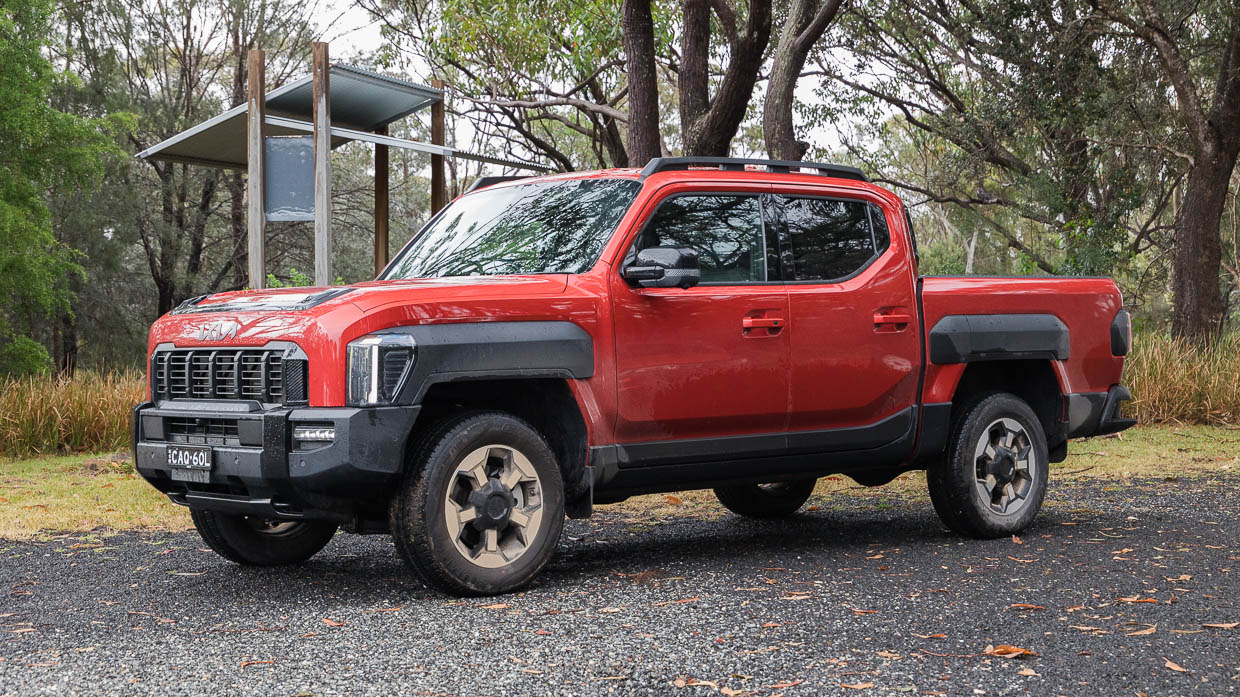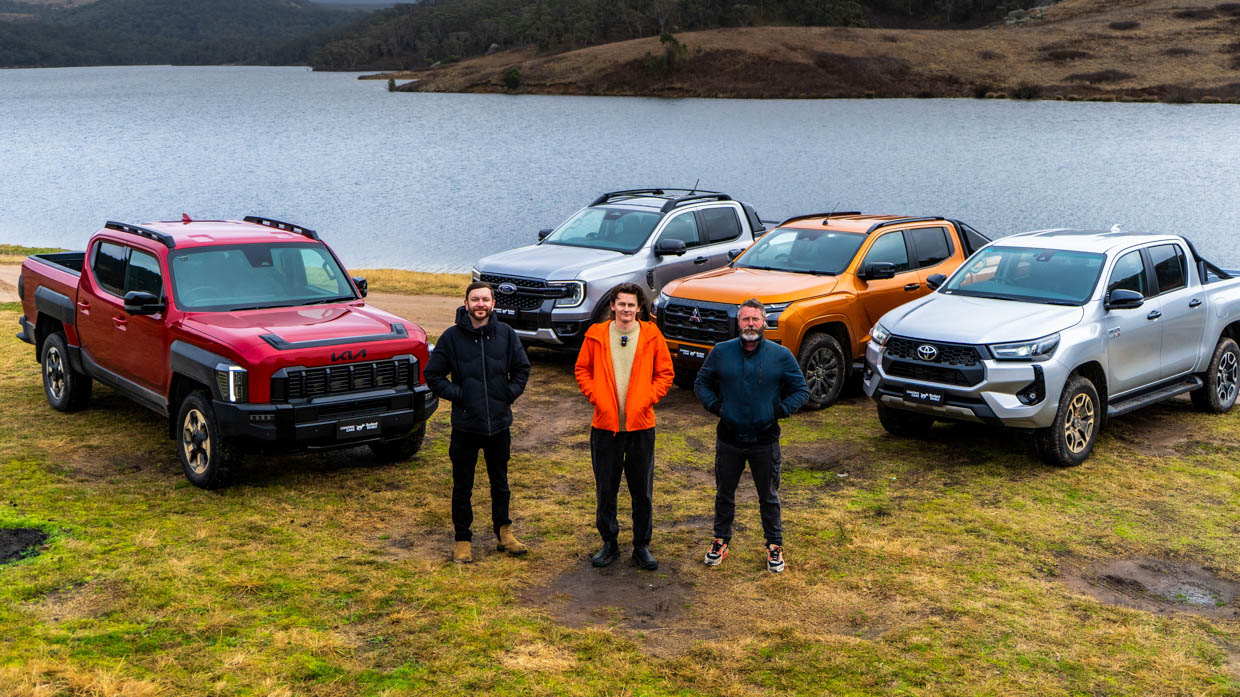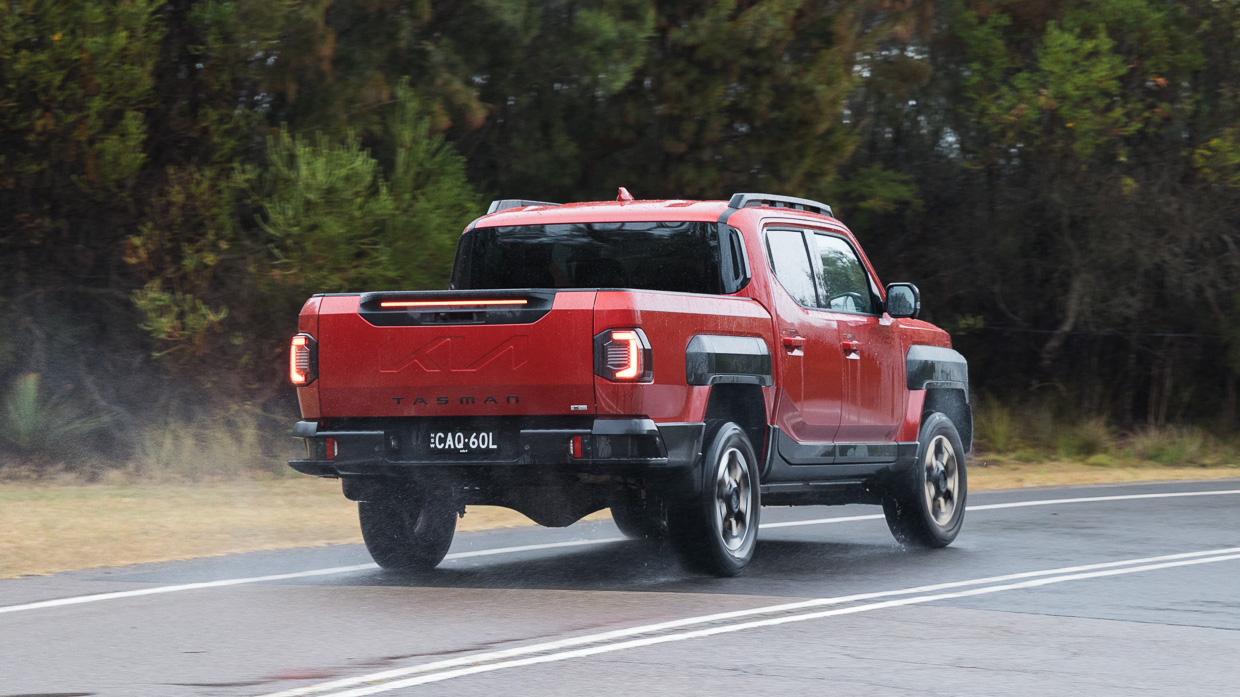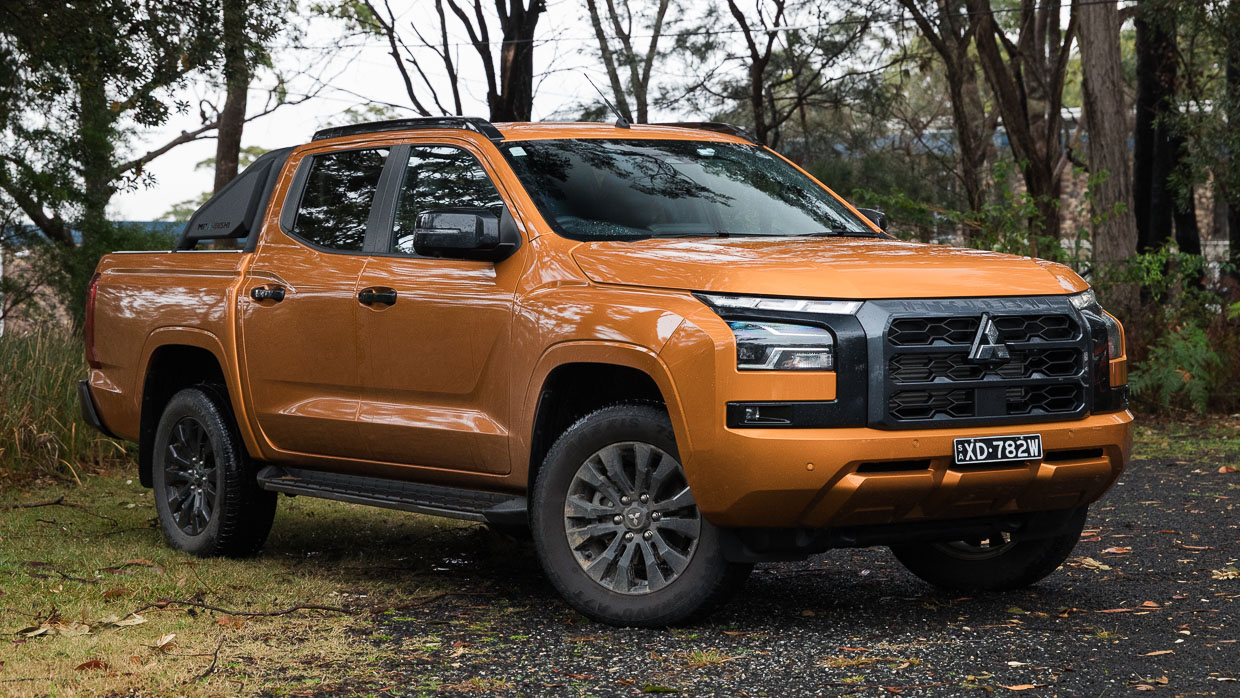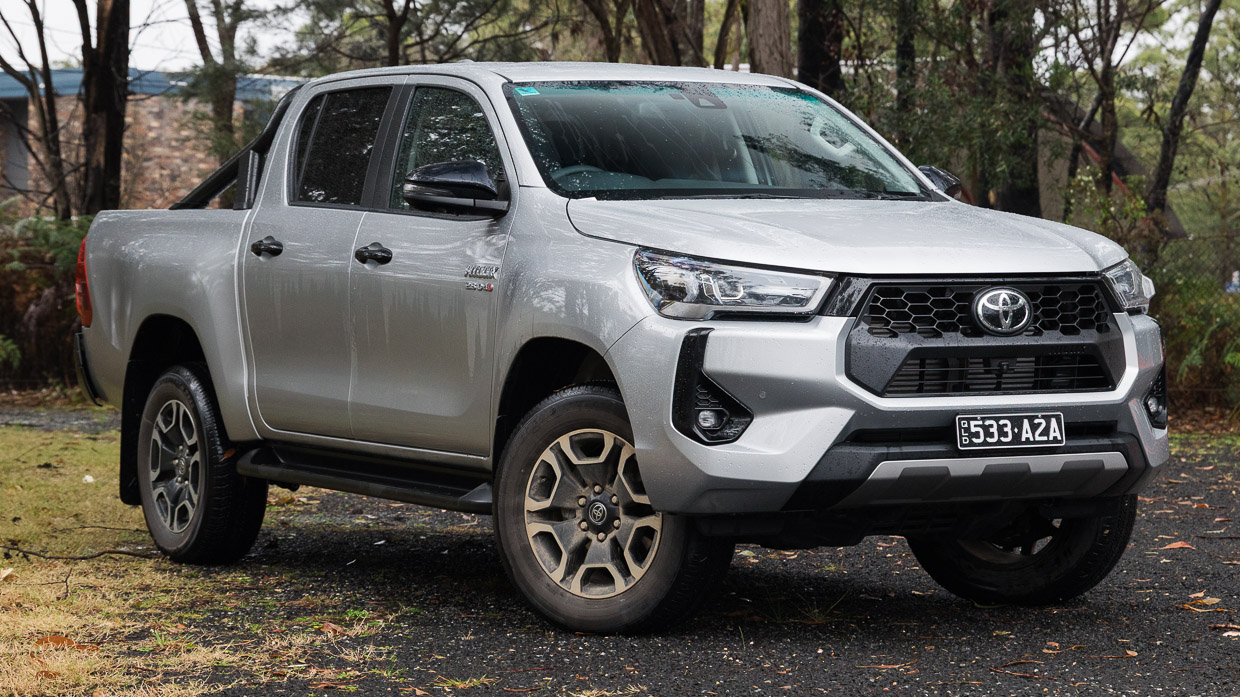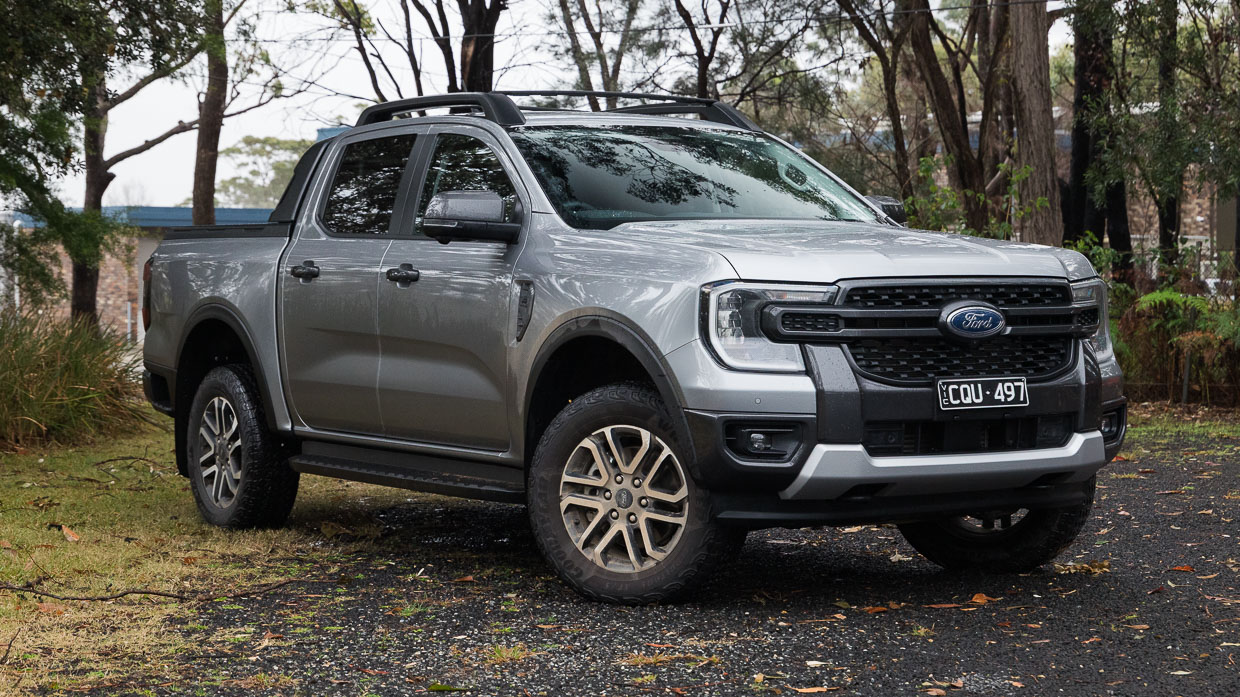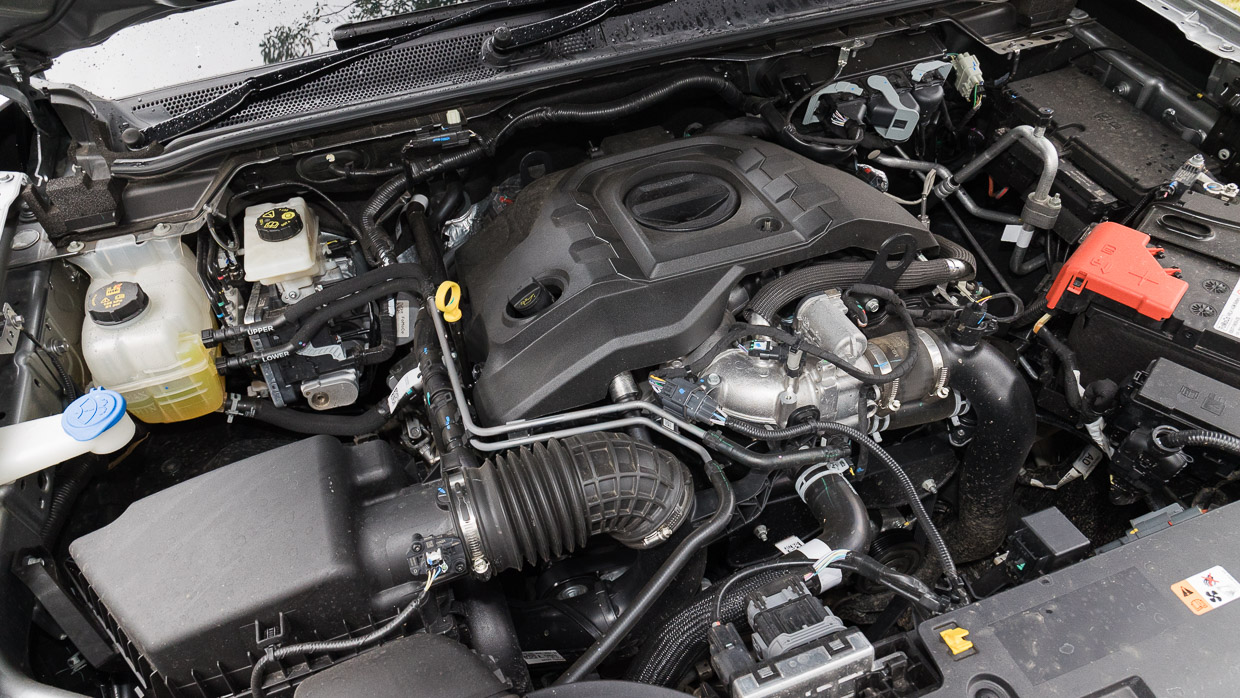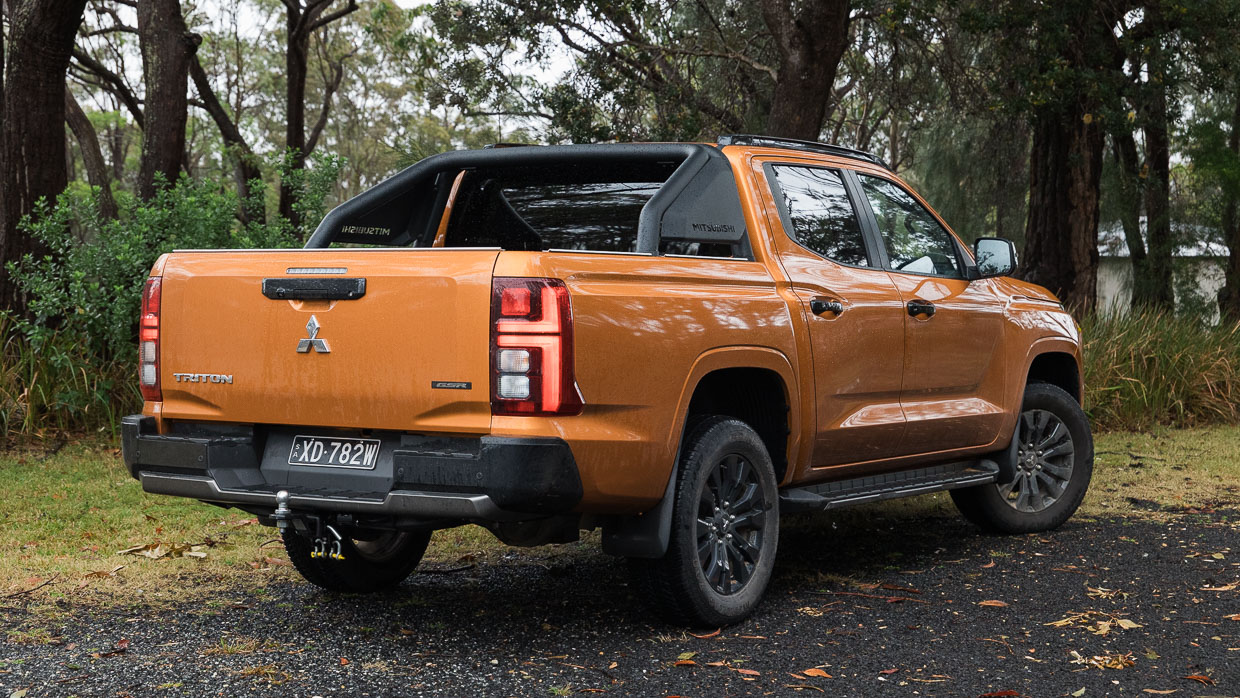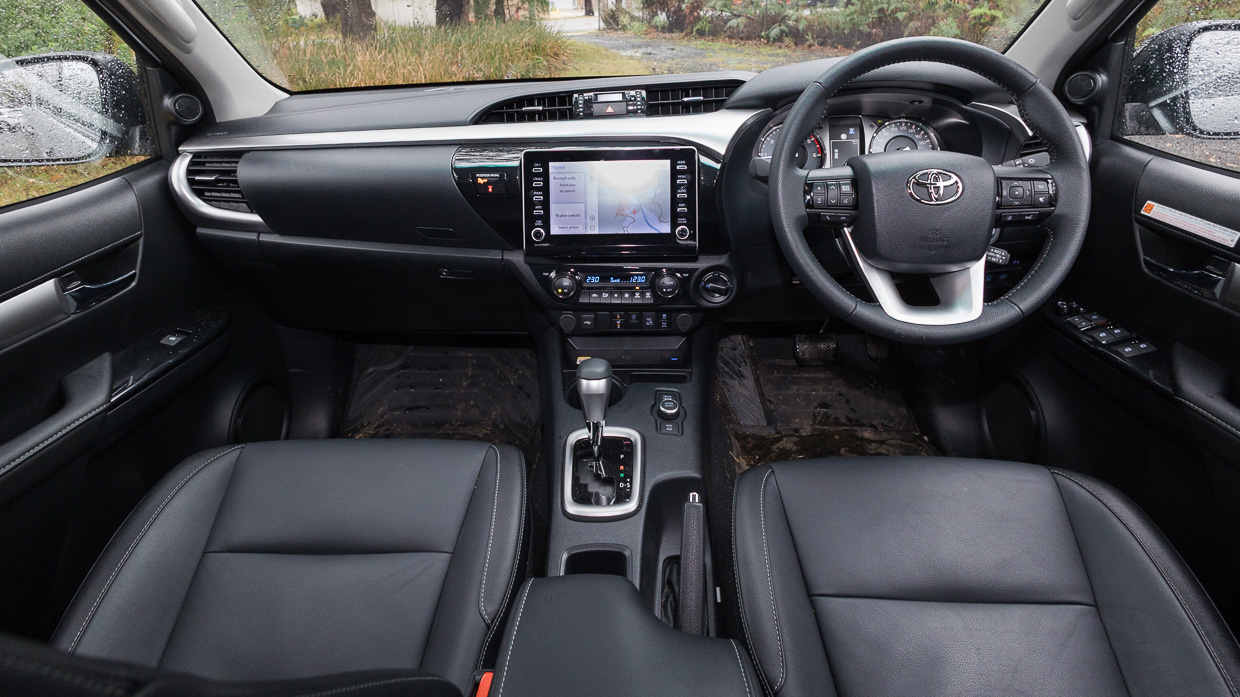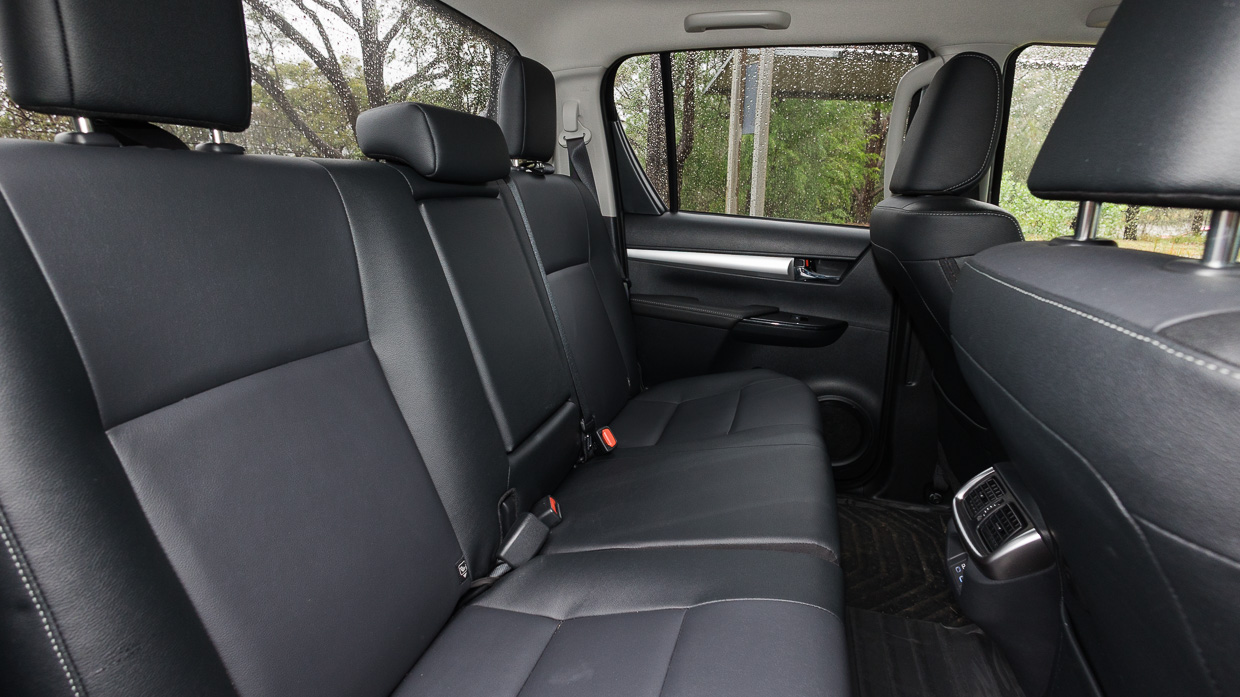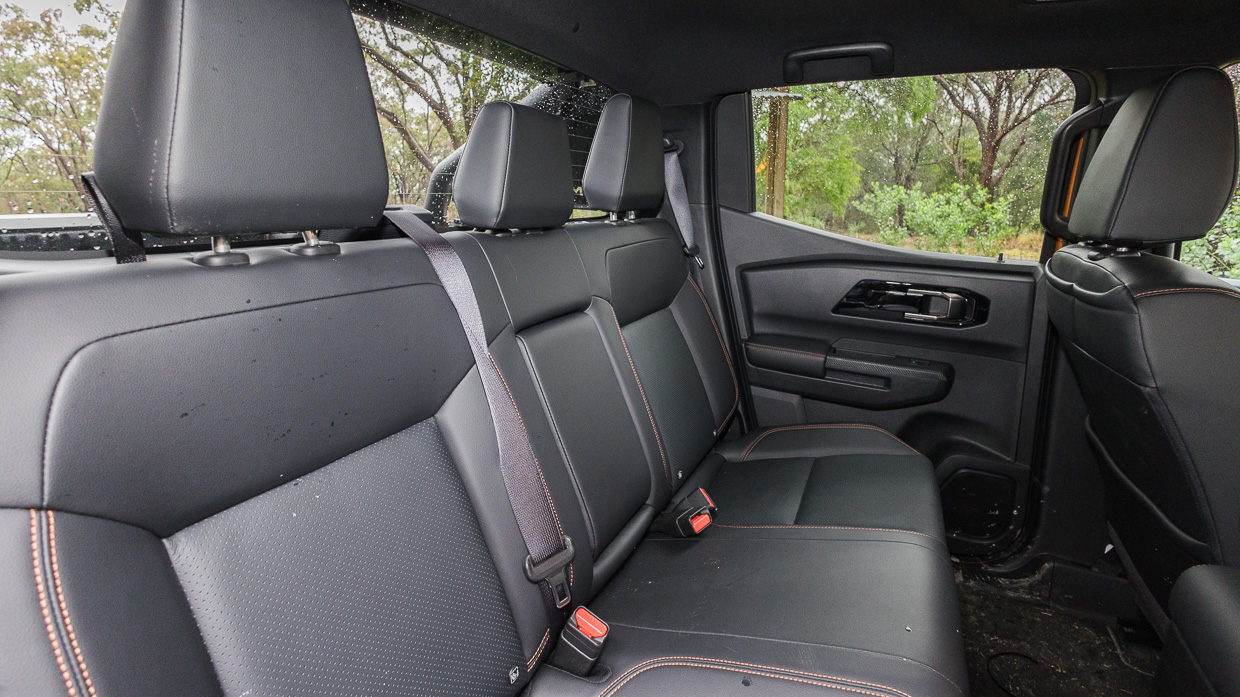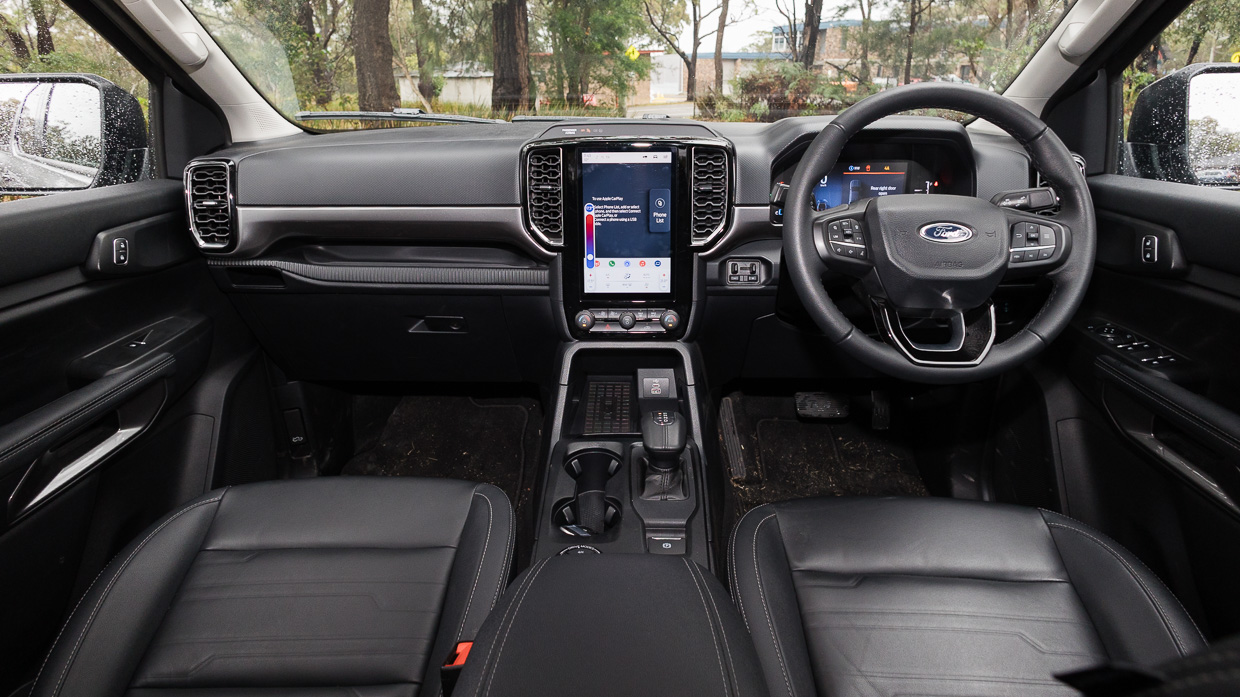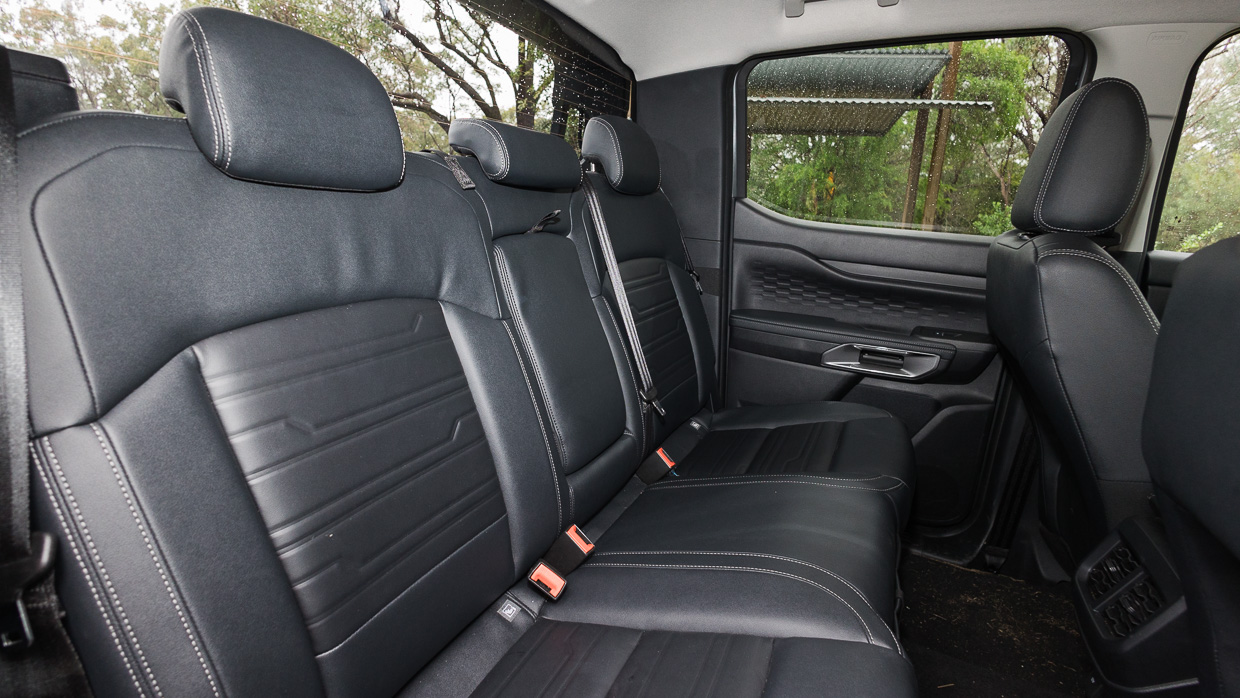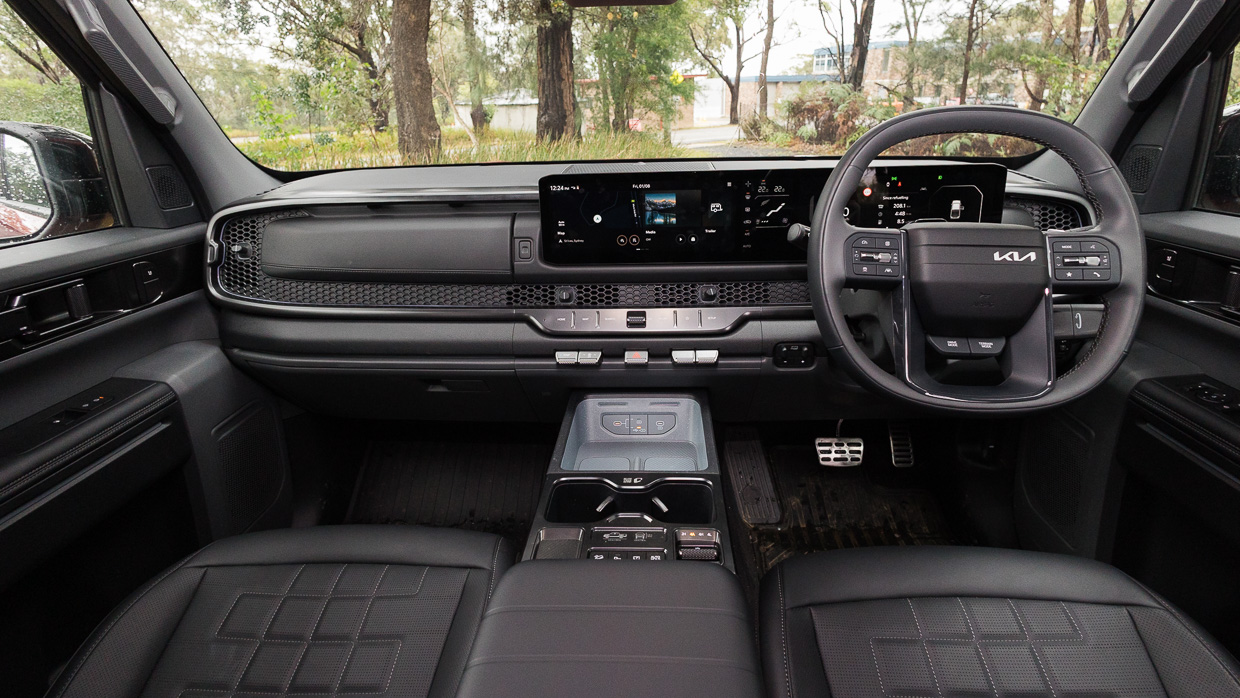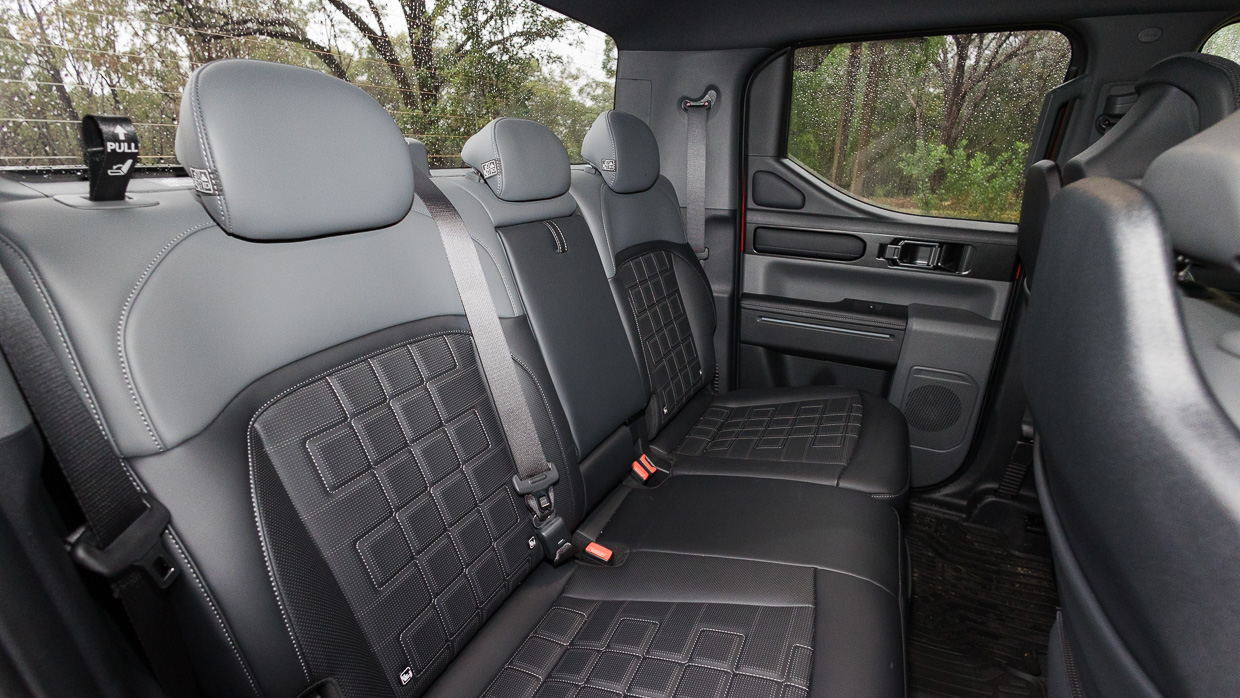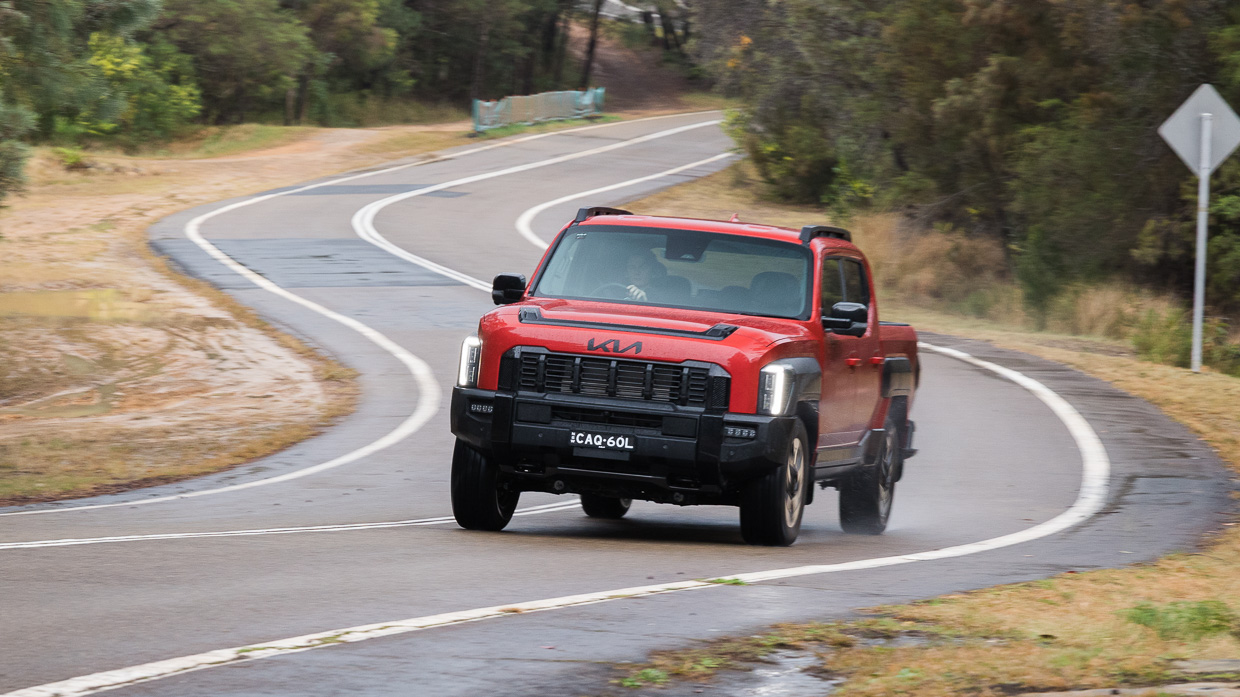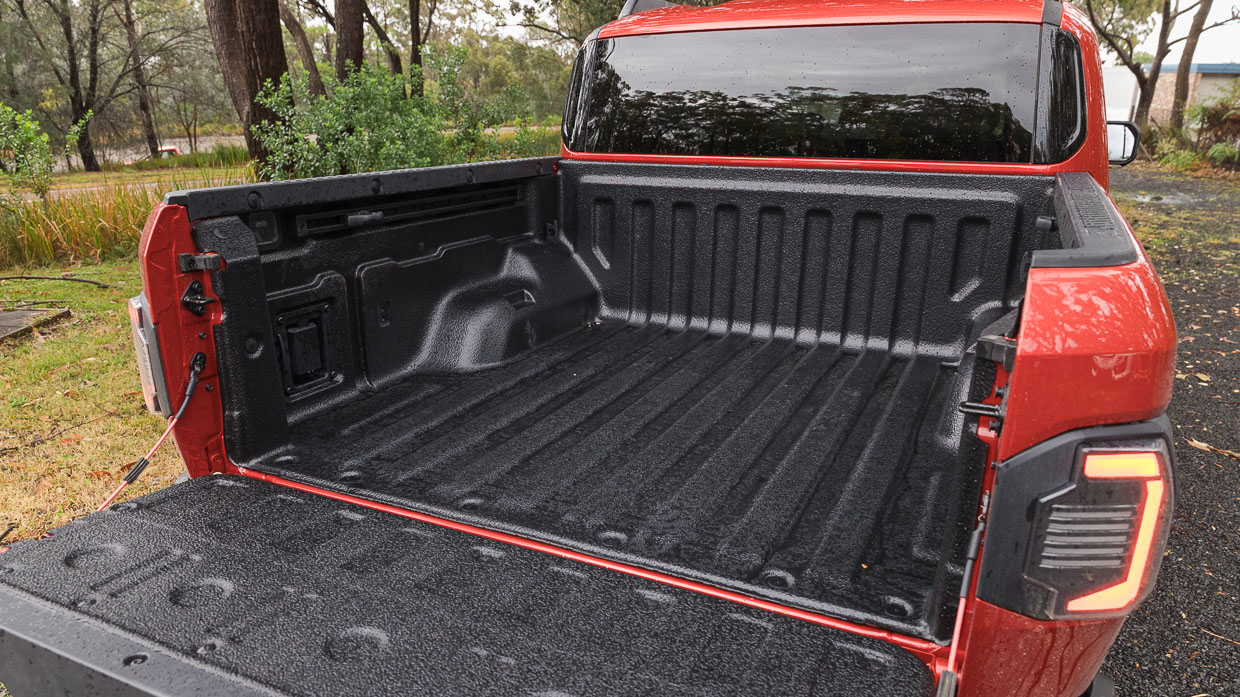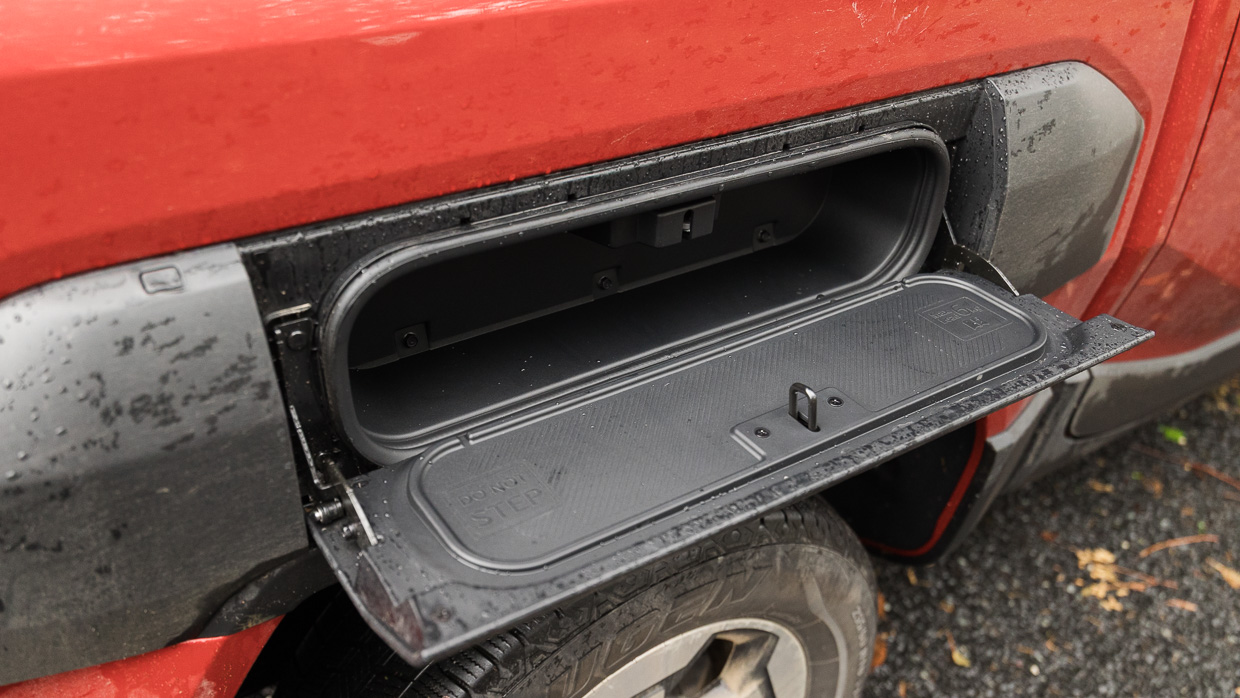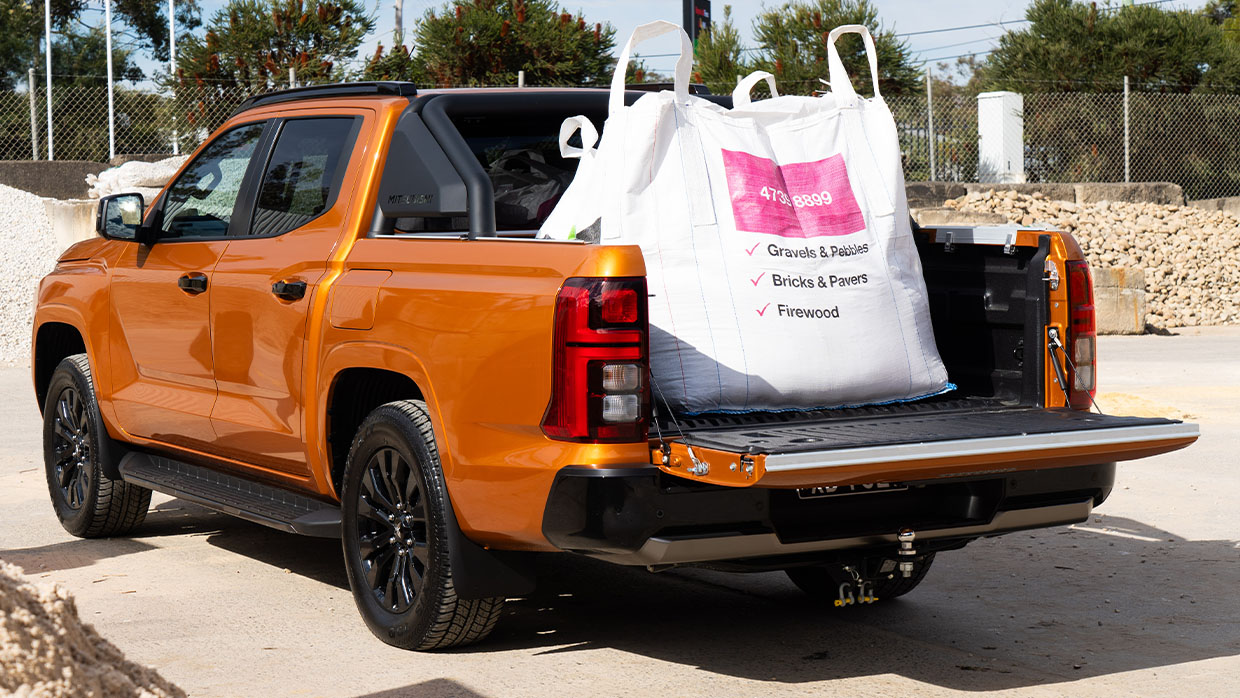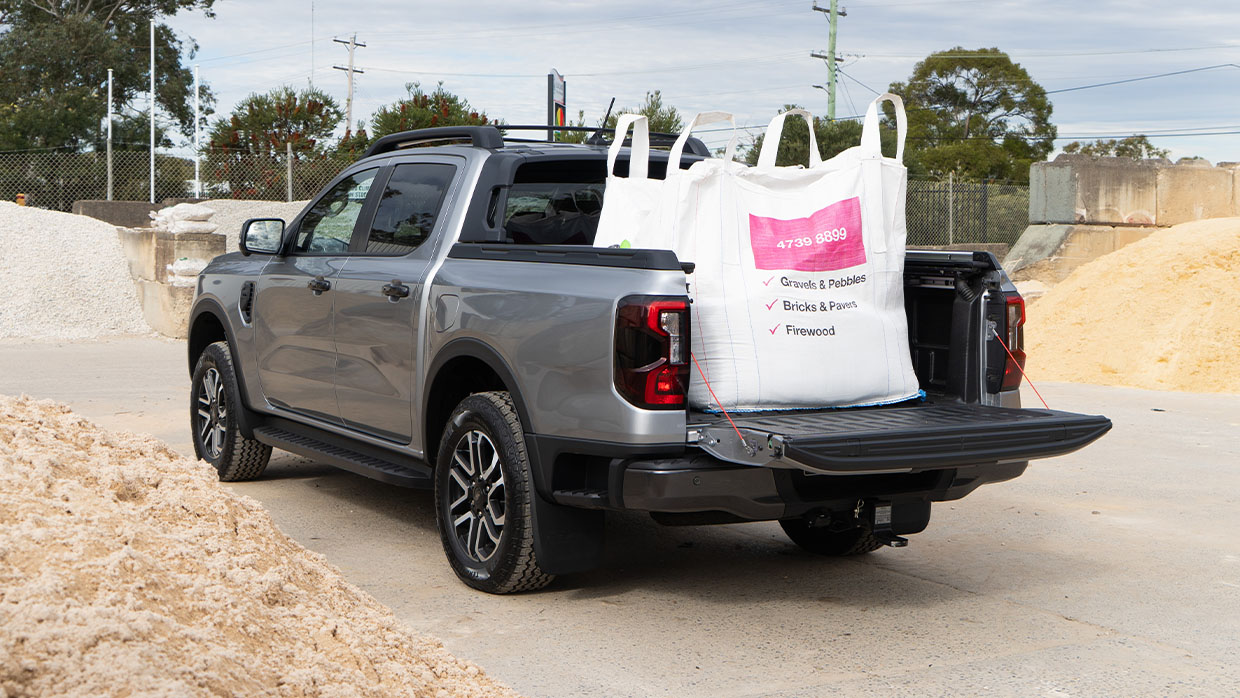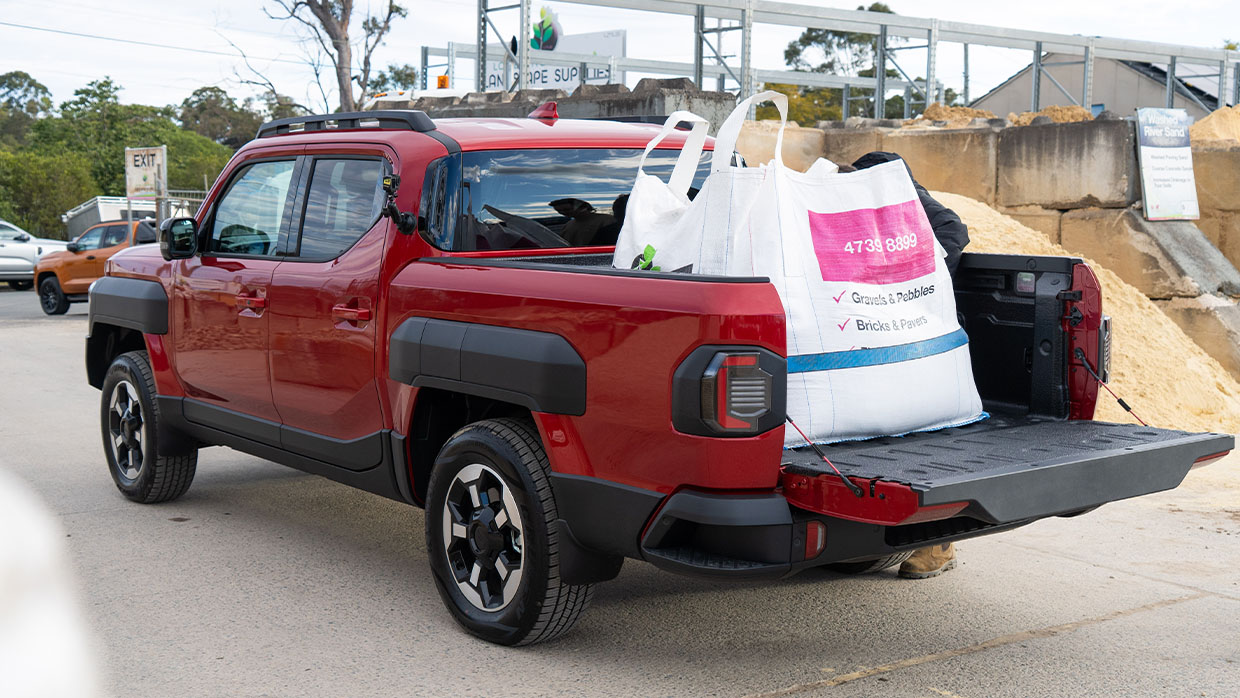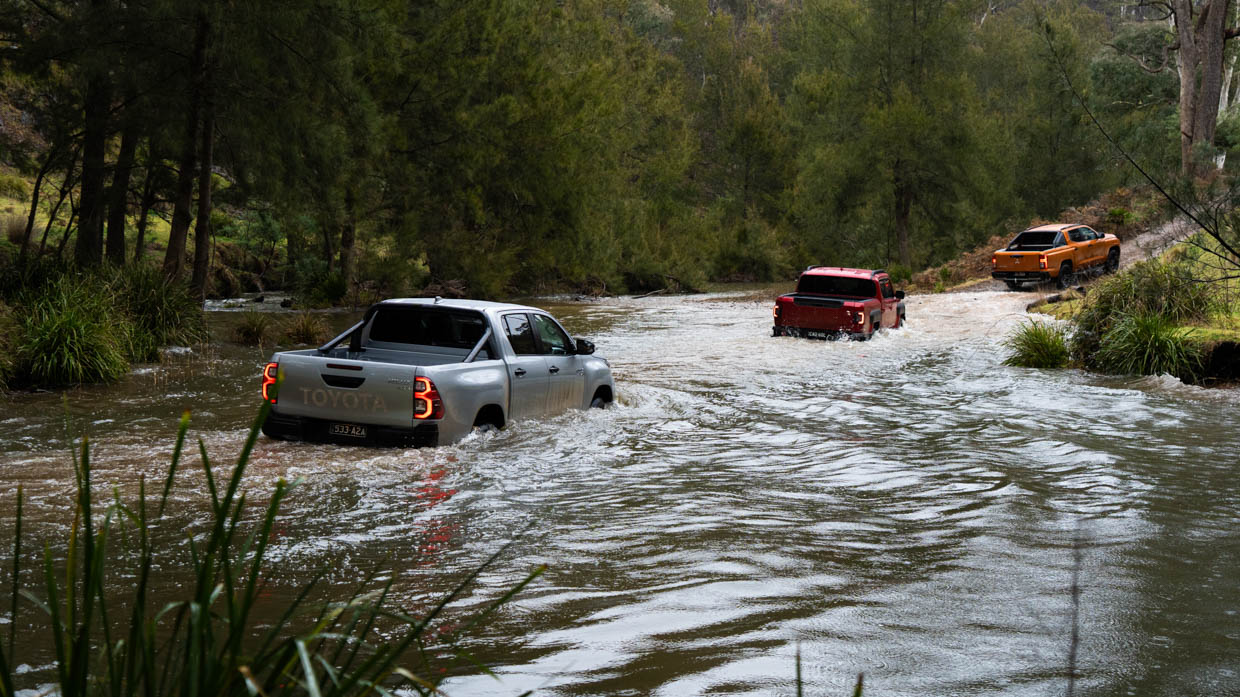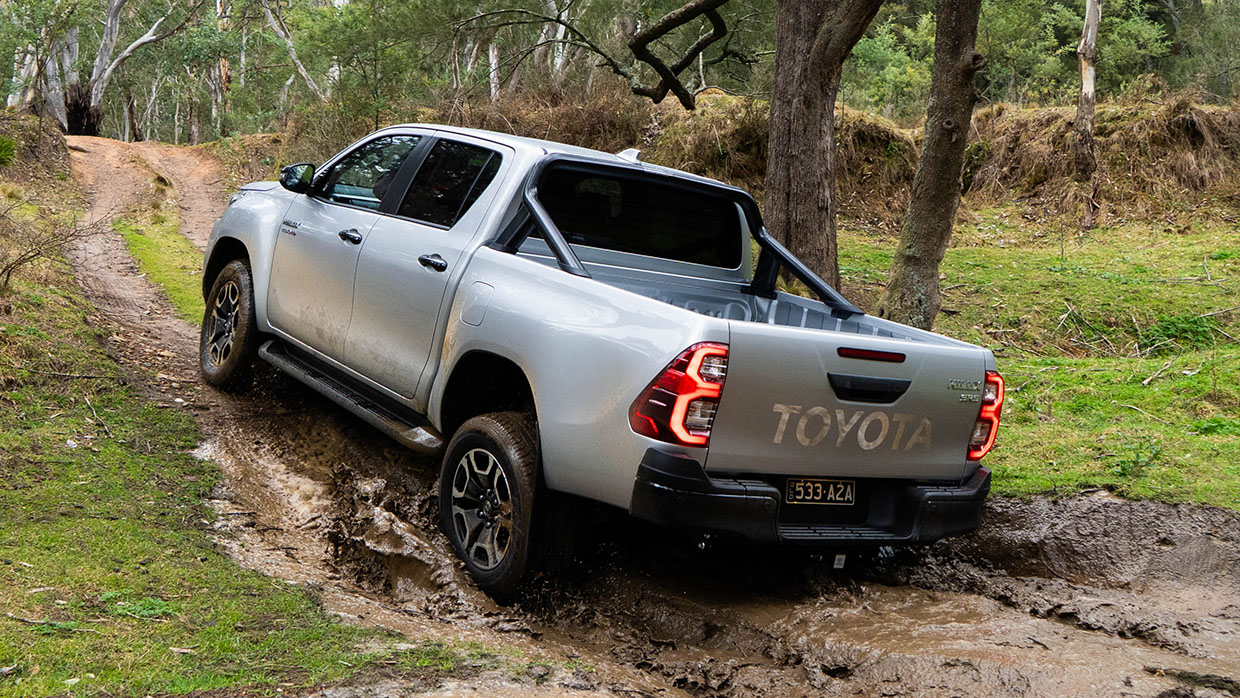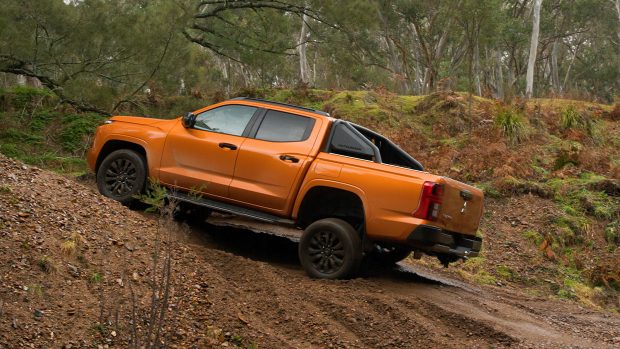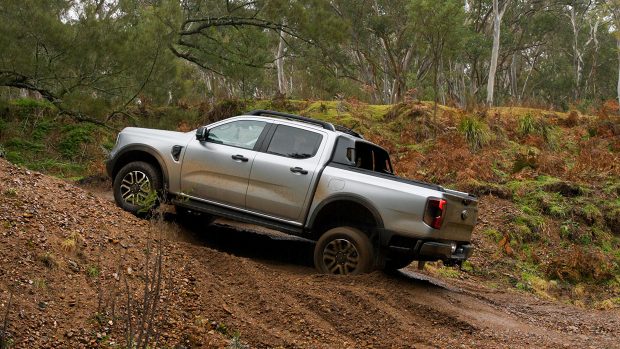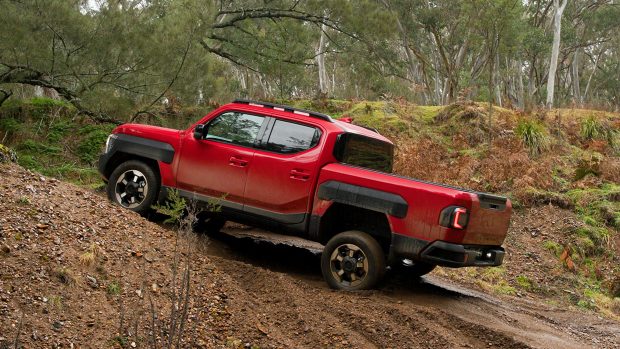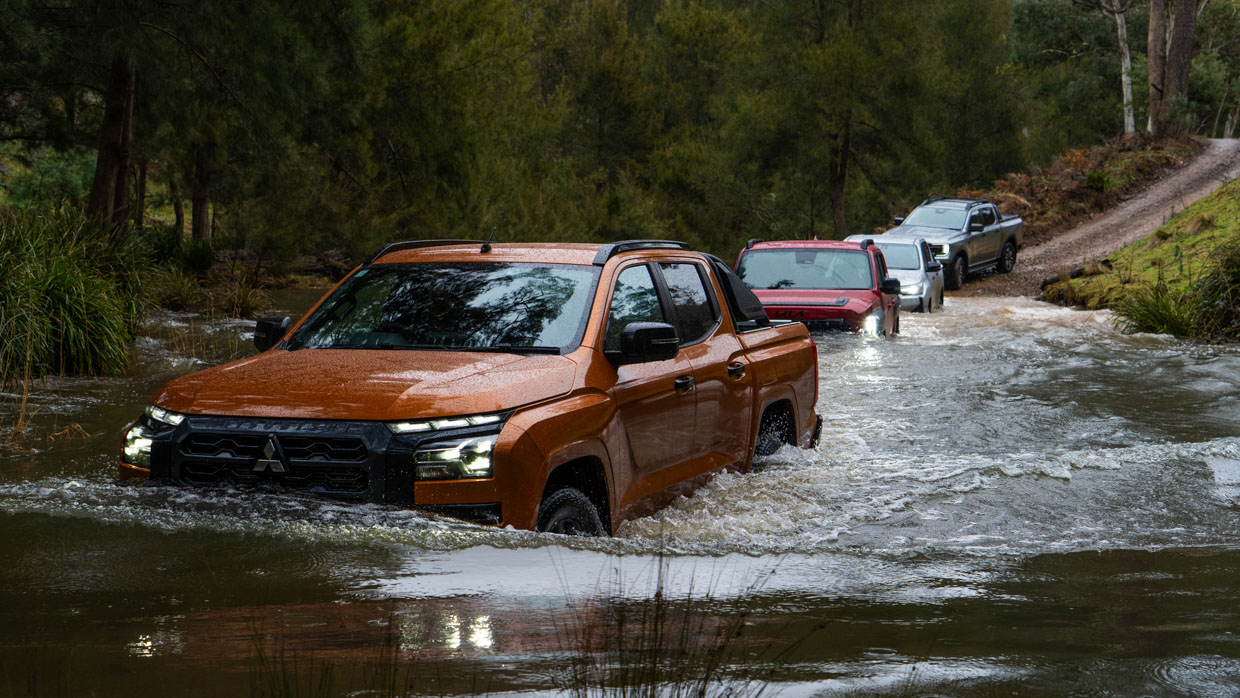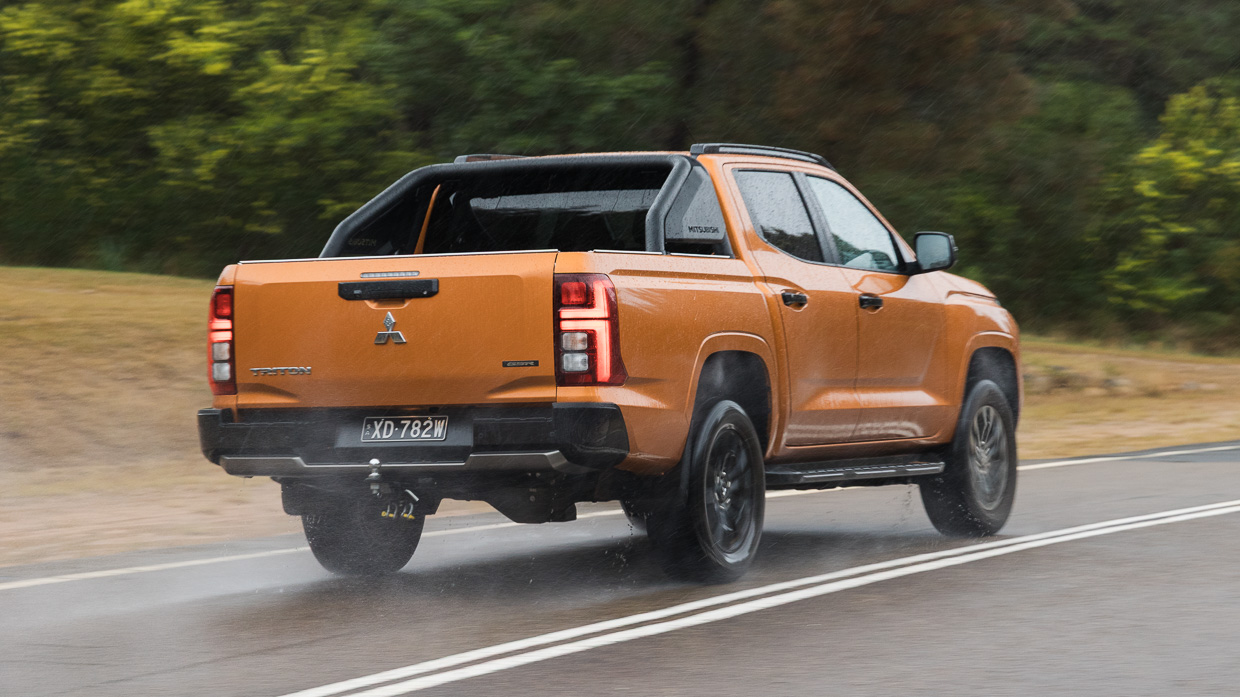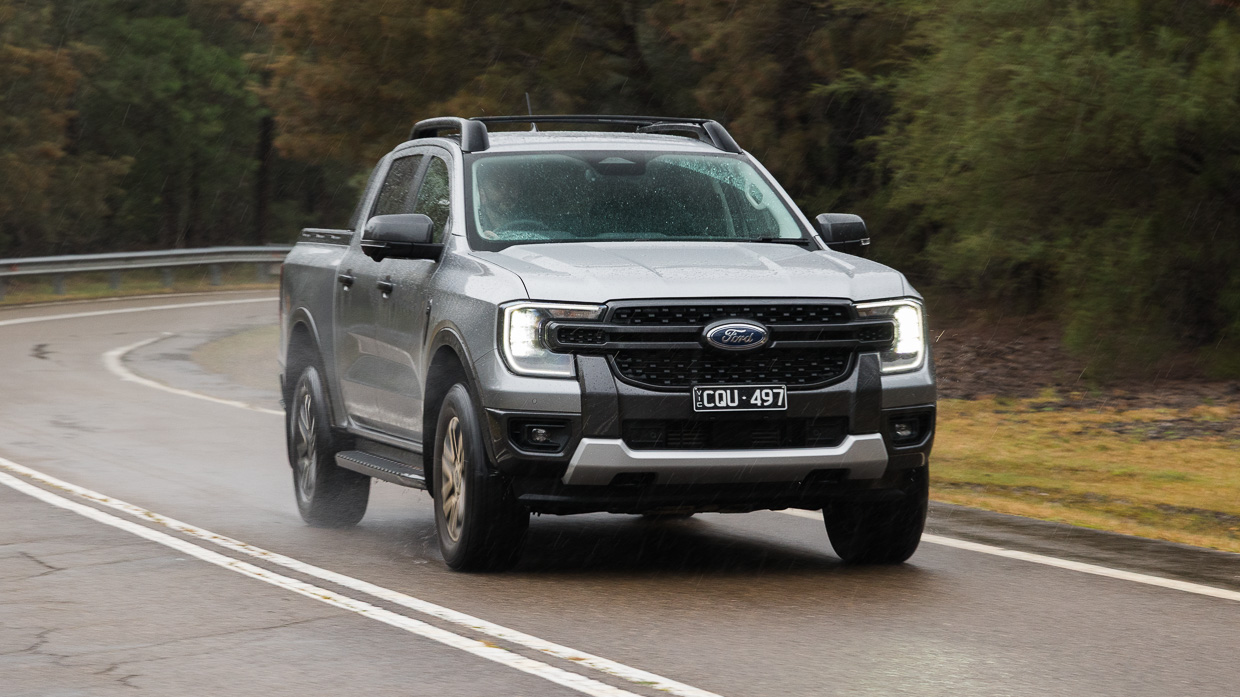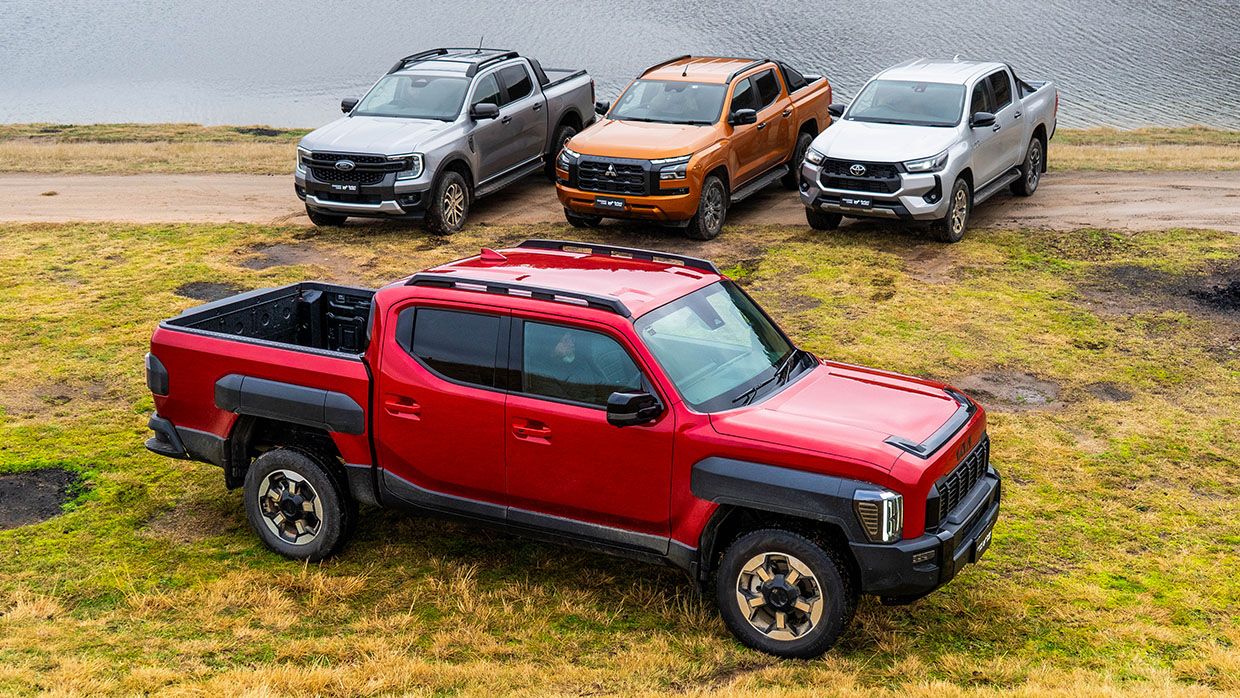-
Car Reviews
- All reviews
- Midsize SUVs
- Small cars
- Utes
- Small SUVs
- Large SUVs
- Large cars
- Sports SUVs
- Sports cars
- Vans
Latest reviews
- Car News
-
Car Comparisons
Latest comparisons
- Chasing Deals
Kia’s Johnny-come-lately Tasman ute has arrived, but can it stand up to Ranger, Hilux, and Triton? We find out over four tough days of testing
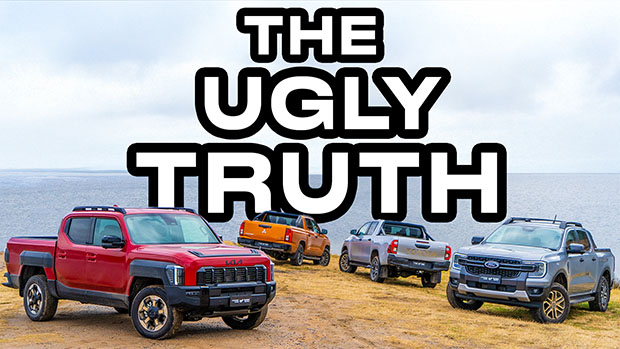
One-fifth of Australia’s new-car market sales come from utes, and the vast majority of that sales growth is coming from high-spec, dual-cab models as they become ever more family friendly.
Kia has been eyeing a slice of that sales pie for nearly a decade, and come 2025 is finally targeting the Toyota Hilux, Ford Ranger, Mitsubishi Triton and more with the Tasman ute’s release.
The Tasman impressed us in pre-production form and on its national media launch. But it’s impossible to say whether the Kia Tasman is really better than its rivals without a direct comparison.
That’s exactly what took Nathan Ponchard, Evan Spence, camera crew and your author west, over Sydney’s Blue Mountains for four days of testing in soaking rain, and near-zero conditions.
We picked three benchmarks for the Tasman: the best-in-class Ford Ranger Sport with its diesel V6, the 10-year old sales juggernaut Toyota Hilux SR5, and the sharply-priced Mitsubishi Triton GSR.
READ MORE: Kia Tasman double cab 2025 review
To separate the wheat from the chaff, we assessed the vehicles across four key areas: work, play, and everyday suitability along with overall value propositions.
Keeping the test focused, we selected the Mitsubishi Triton over the Isuzu D-Max, despite the former being the class’s third-best seller, as Kia needs to sell 20,000 Tasmans annually to achieve its goal — meaning it first needs to get past the Mitsubishi.
The field also misses envelope-pushing newcomers from China, such as the BYD Shark 6, GWM Cannon Alpha and others. Although sales have been strong for this new breed — especially for the Shark — we’re looking for the Tasman to deliver considered, consistent excellence rather than headline figures, at least for this test.
Still, Tasman versus Shark 6, and others, is a valid shootout best reserved for another time. With that out of the way, let’s get testing.
We chose high-level, dual-cab, 4×4 trims of each ute, keeping the spend as close to sub-$70,000 before on-road costs as possible.
Ideally, these variants have the greatest breadth of ability, not sacrificing load-lugging or off-road ability in the pursuit of everyday comfort. Servicing, economy, warranty and residual values are important, too.
And because utes are now family vehicles, these diesel-powered, body-on-frame vehicles with leaf-sprung live rear axles have to pack in plenty of features. That’s a bloody tough ask.
The Mitsubishi Triton GSR costs $63,140, before on-road costs with regular offers available. Ours was fitted with accessories in the form of a flimsy soft tonneau cover ($900), tow bar kit ($1520), and brake controller ($850).
The next most expensive is the Toyota Hilux SR5 V-Active, ours had the high-take Premium pack ($65,760) to bring it in line with rivals for equipment. It has a tow kit standard.
The X-Line sits one down from the range-topping Tasman X-Pro for $67,990 before on-road costs. A permanent $70,990 national driveaway price helps keep things consistent and easy to understand.
Kia’s product planners must have been busy reading spreadsheets, as the Tasman matches or exceeds rivals.
Ford was unable to provide a price competitive Sport with the 2.0-litre twin-turbo diesel ($66,390), so instead we have the $71,490 (before on-road costs) Sport V6.
It’s optioned up with all-terrain rubber ($750), Tour pack ($1750) plus factory accessories such as the Flex Rack ($2800) and awkward roll-top tray cover ($3619).
See the tables below comparing features and running costs of each ute.
| Key Cabin features | ||||
|---|---|---|---|---|
| Mitsubishi Triton GSR | Toyota Hilux SR5 Premium Pack | Kia Tasman X-Line | Ford Ranger Sport V6 | |
| List price (before on-road costs) | $63,140 | $65,760 | $67,990 | $71,490 |
| TPMS | Yes | No | Yes | Yes |
| Upholstery | Leather-appointed | Leather-accented | Synthetic leather | Leather-accented |
| Seat adjust | 10-way power driver w/lumbar | 6-way power driver | 10-way power driver w/lumbar | 8-way power driver’s seat |
| Temp control | Heated (3-stage) | Heated (on/off) | Heated (3-stage) | None |
| Sound system | 6-speaker | 6-speaker | 6-speaker | 6-speaker |
| Screen size | 9.0” touch, 7.0” (DDD) | 8.0” (touch), 4.2” (TFT screen) | 12.3” (touch), 5” (HVAC), 12.3” (DDD) | 10.2” (touch), 8.0” (DDD) |
| Climate control | Dual-zone climate w/ rear air vents | Dual-zone climate w/ rear air vents | Dual-zone climate w/ rear air vents | Dual-zone climate w/ rear air vents |
| Fuel economy | ||||
|---|---|---|---|---|
| Mitsubishi Triton GSR | Toyota Hilux SR5 Premium Pack | Kia Tasman X-Line | Ford Ranger Sport V6 | |
| ADR rating | 7.7L/100km | 7.2L/100km | 7.8L/100km | 8.4L/100km |
| Tested | 10.4L/100km | 12.0L/100km | 11.8L/100km | 13.4L/100km |
| Warranty | |||
|---|---|---|---|
| Mitsubishi Triton GSR | Toyota Hilux SR5 Premium Pack | Kia Tasman X-Line | Ford Ranger Sport V6 |
| 5Y/100,000km* | 5Y/unlimited km | 7Y/unlimited km | 5Y/unlimited km |
*Extendable to 10Y/200,000km if serviced on schedule
| Servicing | ||||
|---|---|---|---|---|
| Mitsubishi Triton GSR | Toyota Hilux SR5 Premium Pack | Kia Tasman X-Line | Ford Ranger Sport V6 | |
| Interval | 12Mo / 15k km | 6Mo / 10k km | 12Mo / 15k km | 12Mo / 15k km |
| 5 year total price | $2545 | $3769.98 | $2809* | $1597* |
*Pre-paid service pack pricing
| Residual values (36 months) | |||
|---|---|---|---|
| Mitsubishi Triton GSR | Toyota Hilux SR5 Premium Pack | Kia Tasman X-Line | Ford Ranger Sport V6 |
| 65.5% | 71.3% | 69.3% | 61.8% |
With only a black mark against residual value — which seems rocky, given Tasman has only just launched — it’s the Kia that comes out as the most well-balanced value offering, with a simple to understand warranty, too.
Everyone imagines their new dual-cab ute powering up rutted tracks on the way to the perfect camping spot and a cold beverage, but the reality is these vehicles spend a lot of time puttering around on bitumen.
For that, the Toyota Hilux is the clear loser. Its tinny sound system, plasticky interior and multimedia screen’s PlayStation 2 graphics date this ute. The back seat is cramped as well, and the power-adjust driver’s seat isn’t much better for comfort.
READ MORE: Toyota Hilux SR5 review
On the road, the Hilux’s engine is vocal and coarse, while its steering is both too heavy when parking and too light at motorway speeds. Toyota has subtly improved the ride quality over time — though it’s still bumpy — and it doesn’t have beeping, intrusive safety systems.
After the Hilux, Triton comes in swinging with classy orange contrast stitching in the GSR, soft-touch materials in key areas and the best steering wheel to hold here. Yet practicalities are no stronger than the Hilux, and wireless Apple CarPlay connectivity was frustratingly inconsistent.
READ MORE: Mitsubishi Triton long-term review
The Triton again has two sides on the road. A seriously soft and supple ride for a leaf-sprung ute and quiet operation wafting around give way to beeping driver attention monitoring and a crude start-stop system.
Ranger takes the other utes’ high points and combines them. Muted and genuinely helpful driver aids, a cabin that’s spacious with hard-wearing materials, plus great ride and steering that strikes the perfect balance for Australia.
READ MORE: Ford Ranger long-term review
This ute has genuine poise and panache. It goes down the road exceedingly smoothly with minimal body-on-frame histrionics. That diesel V6’s tone is infinitely more pleasant than the four bangers, too.
Plus, clever practicalities in the front, like a functional rubberised wireless charging pad and ingenious hot chippy holder, give the Ranger’s cabin lasting appeal.
That is, until the Tasman comes along. Where the others have intentionally down-graded plastic trim pieces, the Tasman X-Line shows up with creamy leatherette on the steering wheel and front door tops.
It builds on practical touches, with great bottle storage (all holders are big enough for 1.5L bottles), six USB-C charge points, twin wireless charge pads, zip-up compartments in the seat back and a 60/40 split-fold rear bench that houses easy-access storage beneath.
The sense of space in the front and rear is fantastic, and the Tasman’s twin 12.3-inch screens, 5.0-inch HVAC display and knurled physical switches combine for seamless, lag-free interaction. Not something evident in any other ute on test.
The Tasman surges off the line quicker than you expect, its perceptive eight-speed automatic and measured throttle response (there’s even a Sport mode) aiding. The only gripe about the engine is that it can be droney at 2000rpm when climbing hills.
Compared to Ranger, the Tasman’s ride is busier, with greater thump from the rear end especially. Yet it maintains a consistent steering feel and a confident posture on curvy country roads.
Although easier to defeat than ever the Kia’s beeping speed sign, driver monitoring, and lane-keep, these systems should be helpful in 2025, not a hindrance.
| Spec | Mitsubishi Triton GSR | Toyota HIlux SR5 Premium Pack | Kia Tasman X-Line | Ford Ranger Sport V6 |
|---|---|---|---|---|
| Engine | 2.4TTD I4 | 2.8TD I4 | 2.2TD I4 | 3.0TD V6 |
| Power | 150kW @ 3500 | 150kW @ 3000-3400 | 154kW @ 3800 | 184kW @ 3250 |
| Torque | 470Nm @ 1500-2750 | 500Nm @ 1600-2800 | 440Nm @ 1750-2750 | 600Nm @ 1750-2250 |
| Transmission | 6spd automatic | 6spd automatic | 8spd automatic | 10spd automatic |
| Drive type | Super Select II full-time 4WD, low range, locking rear differential | Selectable 4×4 with low range, locking rear differential | Full-time 4×4 (4A), locked centre high (4H), locked centre low (4L), auto-locking rear differential | Full-time 4×4 (4A), locked centre high (4H), locked centre low (4L), locking rear differential |
Coming into the test the Tasman has an advantage, being the longest, widest and tallest on test. These imposing proportions help offset its ungainly Sid The Sloth face and translate to a genuinely useful ute.
The Tasman’s payload nearly matches the best-here Triton, and the tape measure confirms it has just about the biggest space, with plenty of room between the arches as well.
| Tray sizing | ||||
|---|---|---|---|---|
| Spec | Mitsubishi Triton GSR | Toyota Hilux SR5 Premium Pack | Kia Tasman X-Line | Ford Ranger Sport V6 |
| Length | 1430mm | 1525mm | 1500mm | 1480mm |
| Width | 1545mm | 1535mm | 1570mm | 1420mm |
| Depth | 500mm | 490mm | 540mm | 550mm |
| Payload | 1034kg | 900kg | 1027kg | 927-1004kg |
| Towing capacity | 3500kg | 3500kg | 3500kg | 3500kg |
Another thing, the Hilux, Triton and Ranger all use very similar-looking galvanised, round-edged tie-down points. The Tasman gets unique, nautical-looking anchors that are much easier to use.
It’s between Ranger and Tasman for best tray smarts (the Hilux doesn’t even get a drop-in liner at this price!). The Ford has a ruler, and sturdy side step the Tasman doesn’t.
The Kia scores a sort-of-useful storage compartment in its driver side fender, but the inclusion of a doubled sealed 240-volt socket in the tub secures the Tasman’s tub as best here.
With 600kg of sand and 260kg of blokes on board, each ute was subjected to a steeply-graded loop to test braking performance, laden ride, handling and powertrain calibration.
First tribute: Hilux. This vehicle improved drastically with weight onboard, settling the abrupt rear suspension (by 55mm) and actually aiding turn-in. The 150kW/500Nm 2.8-litre diesel and six-speed auto shrugged off the extra weight. The Toyota improves the more you ask.
It’s a very different story in the Triton, which has a three-leaf rear end in lighter duty GSR guise. It immediately sagged — though no more than the Hilux at 55mm — and felt mushy on the road. Over the speed bumps it smacked its bump stops and took at least five heaves to settle, three more than the others.
Plus, the Triton’s engine has a narrow window of operation, so it was slowest with a load thanks to its six-speed automatic not being able to keep it on the boil. An eight-speed would be better.
At least the Super Select II 4WD system’s 4A mode gave grip and confidence missing from the Hilux, which has to be in 2H on tarmac. The Ranger and Tasman match the Triton’s 4WD system with 4A modes as well.
If the Hilux improved with 860kg on board, the already-excellent Ranger was essentially unaffected. The rear end sagged a lot less than the others (45mm) and the weight barely bothered its excellent steering and didn’t register on the V6’s thick torque band.
Worth noting both the Ranger and Tasman have rear disc brakes, and the others drums. This improved feel, reliability and outright braking performance.
Visually, the Tasman looked under pressure when loaded (dropping 54.5mm) yet on the road it came very close to Ranger. As when unladen, the Tasman’s ride wasn’t quite as slick and controlled but it didn’t have any of Triton’s unnerving lateral shifting.
As for punch, the 2.2-litre four-cylinder diesel splits the difference between the Hilux and Ranger for real-world performance. Though torque’s only 440Nm, it seems to be spread across a broad band and the eight-speed automatic squeezes every last Newton metre.
This is what dreams are made of. Signing on the dotted line and taking your new ute to a beautiful, remote spot to camp…and figure out what your first mods are.
Our off-road test interrogated each vehicle’s basic capability, with turning circles, off-road comfort, wading, tech usability and traction control systems all under scrutiny. These things can make off-roading feel effortless if done right, and terrifying if not.
Although the smallest ute on test, the Hilux, has a poor turning circle, plus heavy steering and a stiff ride. Yet it is the undisputed champion off-road.
That’s all thanks to excellent traction control (which also helps keep the Hilux’s rear end in check on wet tarmac). Once you’ve engaged 4L, which is easy enough with the plasticky selector, you’re presented with a few modes in the Multi-Terrain Select system.
Normal’s probably all you need, as the Hilux breezed up our blown-out climb with ease, the authoritative traction control keeping wheelspin to a minimum.
It was enough to think we’d chosen to easy a challenge, but the next victim — the Mitsubishi Triton — proved our hill was tough enough.
With lighter steering, the new Triton is still nimble even though it’s now 10mm wider than Hilux. Its extra compliance means it oozes over sharp edges, yet doesn’t help it with traction.
Articulation and ground clearance are a little worse than Hilux, and its traction control doesn’t measure up to the Toyota. That said, it made it up without too much fuss.
Next came the Ford Ranger with the advantage of optional Goodyear Wrangler all-terrain tyres, the greatest ground clearance and a set-and-forget mentality to its off-road drive modes.
Similarly compliant to the Triton, the Ranger’s steering weight and turning circle were good. It felt unflappable until the climb. It’s almost as if the traction control failed to engage, where the Triton and Hilux easily dispatched the challenge.
When reversing down the hill for another go, the Ranger’s reverse AEB got in the way, too, which was very frustrating. Plus, if you want to lock the rear differential (all test vehicles have this function) it’s several taps on the rather laggy touchscreen to do so.
That leaves us with Tasman. It, too, has an advantage with every trim (bar X-Pro, which gets an e-locker) fitted with a mechanical auto-locker in its huge rear differential casing. This aided its climbing ability, no doubt, but the traction control also nipped spin from the front axle.
Call it a step down from the Hilux, though a clear second place thanks to the balanced ride comfort, good articulation and very easy-to-use Terrain modes with the wheel-mounted paddle. It was straightforward and effortless.
Yet to be confirmed is how modifiable the Tasman platform will be. The Hilux is the leader in that sense, followed by the Ranger (both are available in a host of more hard-core trims, too) and Mitsubishi Triton.
No vehicle displayed any signs of water ingress either, which was impressive.
| Spec | Mitsubishi Triton GSR | Toyota HIlux SR5 Premium Pack | Kia Tasman X-Line | Ford Ranger Sport V6 |
|---|---|---|---|---|
| Approach/departure (degreesO\) | 30.4 / 22.8 | 29 / 27 | 28.9 / 25.0 | 30 / 23 |
| Ground clearance | 228mm | 216mm | 224mm | 234mm |
| Wheel & tyre | 18” 265/60 Maxxis Bravo A/T | 18” 265/60 Dunlop Grandtrek | 18” 265/60 Kumho Crugen | 18” 255/65 Goodyear Wrangler Territory AT |
| Wading depth | No figure quoted | 700mm | 800mm | 800mm |
| Track width (F/R) | 1570 / 1565mm | 1535 / 1550mm | 1636 / 1624mm | 1620mm |
| Suspension | Double wishbone F, live axle with leaf spring (3-leaf pack) | Double wishbone F, live axle with leaf spring (4-leaf pack) | Double wishbone F, live axle with leaf spring (4-leaf pack) | Double wishbone F, live axle with leaf spring (4-leaf pack) |
The Triton’s an interesting ute. In top-spec GSR form it quickly puts a strong foot forward with a compliant ride, classy feeling interior and solid off-road ability.
Yet it doesn’t step up when presented with a challenge. The rear-end goes all squishy with weight onboard and the engine protests when asked to push on. It’s almost like Mitsubishi didn’t broaden the old Triton’s envelope, just shifted its talents around.
Still affordable and solid enough, the Triton was quickly left behind in this elevated company.
Rating
7/10
Good Points
Needs Work
We came in expecting the Hilux to be dead last given its 10-year vintage, yet Toyota’s clearly been busy updating what matters to ute buyers.
Its cabin may be putrid and ride quality still abrupt, but the Hilux nails it off-road, gets better the more you ask and feels spookily better in its latest SR5 V-Active guise.
Rating
7/10
Good Points
Needs Work
Clearly the favourite at the start of this, the Ranger came in all guns blazing equipped with cheater all-terrain tyres and that powerful V6.
Yet the price is so elevated in this company, and the Ranger is already starting to feel old — especially that Sync multimedia system.
Still the on-road benchmark, the Ranger’s traction control and clunky off-road settings let it down in this test.
Rating
8/10
Good Points
Needs Work
That leaves the Kia Tasman as the winner…just. Partially, it’s because Kia’s first effort feels like a breath of fresh air in a segment that’s been consumed by bitser lifecycle updates and tinsel tactics to keep buyers coming back.
Where manufacturers like Toyota, Mitsubishi, Nissan, and even Ford iterate and update their commercial vehicles, Kia’s bold Tasman innovates. And yet it isn’t compromised when it comes to what a ute needs to do. It has the payload and off-road ability to run with the best.
Perfect? Not quite. But the Tasman didn’t put a foot wrong. You’ll probably be made fun of at the worksite for the first week, but just know deep down you made an informed decision and picked a proper well-rounded ute.
Rating
8/10
Good Points
Needs Work
Latest comparisons
About Chasing cars
Chasing Cars reviews are 100% independent.
Because we are powered by Budget Direct Insurance, we don’t receive advertising or sales revenue from car manufacturers.
We’re truly independent – giving you Australia’s best car reviews.
